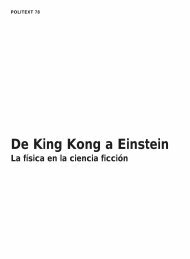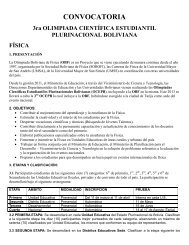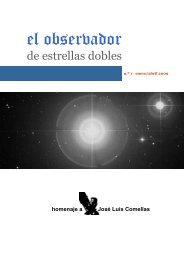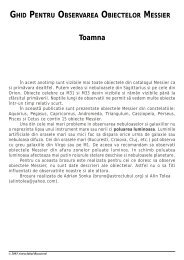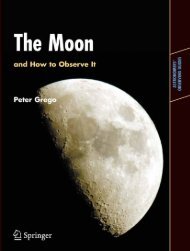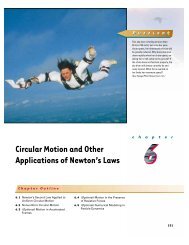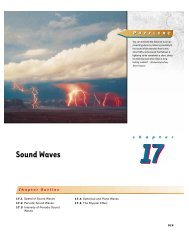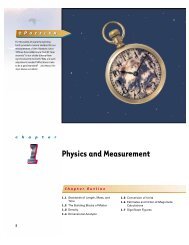A Brief History of Algebra and Computing: An Eclectic Oxonian View
A Brief History of Algebra and Computing: An Eclectic Oxonian View
A Brief History of Algebra and Computing: An Eclectic Oxonian View
Create successful ePaper yourself
Turn your PDF publications into a flip-book with our unique Google optimized e-Paper software.
mundane aspects including associative <strong>and</strong>commutative (\AC") matching.<br />
Modelling is an important aspect <strong>of</strong> computer science. However many algebraic properties<br />
may be derived from models. To quote Hoare [5]:<br />
A model <strong>of</strong> a computational paradigm starts with choice <strong>of</strong> a carrier set <strong>of</strong><br />
potential direct or indirect observations that can be made <strong>of</strong> a computational<br />
process. A particular process is modelled as the subset <strong>of</strong> observations to which<br />
it can give rise. Process composition is modelled by relating observations <strong>of</strong><br />
a composite process to those <strong>of</strong> its components. Indirect observations play an<br />
essential role is such compositions. <strong>Algebra</strong>ic properties <strong>of</strong> the composition<br />
operators are derived with the aid <strong>of</strong> the simple theory <strong>of</strong> sets <strong>and</strong> relations.<br />
The viability <strong>of</strong>such approaches has yet to be seen in widespread industrial practice. As<br />
Hoare says [5]:<br />
The construction <strong>of</strong> a single mathematical model obeying an elegant set<strong>of</strong><br />
algebraic laws is a signi cant intellectual achievement so is the formulation <strong>of</strong><br />
a set <strong>of</strong> algebraic laws characterising an interesting <strong>and</strong> useful set <strong>of</strong> models.<br />
But neither <strong>of</strong> these achievements is enough. We need to build up a large collection<br />
<strong>of</strong> models <strong>and</strong> algebras, covering a wide range <strong>of</strong> computational paradigms,<br />
appropriate for implementation either in hardwareorins<strong>of</strong>tware, either <strong>of</strong> the<br />
present day or <strong>of</strong> some possible future.<br />
However the prospects for the use <strong>of</strong> algebraic techniques in the design <strong>and</strong> veri cation <strong>of</strong><br />
computer based systems are promising if the techniques can become as familiar to engineers<br />
as school algebra is to many today.<br />
References<br />
[1] J. Gattegno. Lewis Carroll: Fragments <strong>of</strong> a Looking Glass. Thomas Y. Crowell<br />
Company, NewYork, 1976. Translated by R. Sheed.<br />
[2] R.T. Gunther. Chemistry, Mathematics, Physics <strong>and</strong> Surveying, volume I <strong>of</strong> Early<br />
Science in Oxford. Oxford, 1923. Printed for the Oxford Historical Society atthe<br />
Clarendon Press.<br />
[3] R.T. Gunther. Oxford Colleges <strong>and</strong> their Men <strong>of</strong> Science, volume XI <strong>of</strong> Early Science<br />
in Oxford. Oxford, 1937. Printed for the author.<br />
[4] C.A.R. Hoare. Re nement algebra proves correctness <strong>of</strong> compiling speci cations. In<br />
C.C. Morgan <strong>and</strong> J.C.P. Woodcock, editors, 3rd Re nement Workshop, Workshops in<br />
<strong>Computing</strong>, pages 33{48. Springer-Verlag, 1991.<br />
[5] C.A.R. Hoare. <strong>Algebra</strong> <strong>and</strong> models. ACM S<strong>of</strong>tware Engineering Notes, 18(5):1{8,<br />
December 1993.<br />
7



